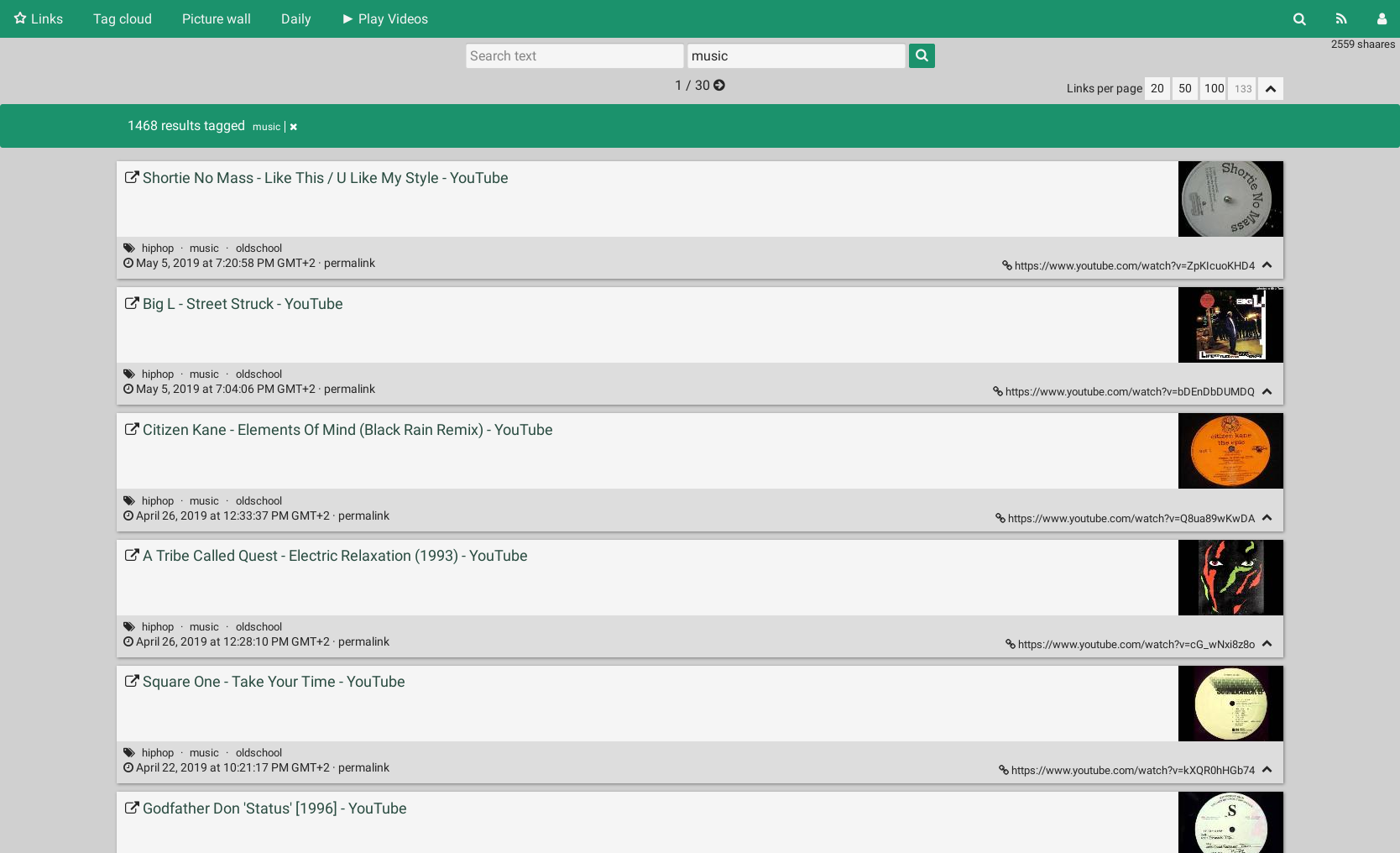Shaarli - Managing bookmarks in a minimalist way

- TLDR; Here’s a link: https://github.com/shaarli/Shaarli
- Here’s a link to the demo site they host: https://demo.shaarli.org
Being someone with ADHD, I have found few things more frustrating than figuring out where I tossed that article I want to review later, or bookmark for a system. Rarely do I log in to a browser - never on my work machines, and never on my phone. I just don’t for some reason.
- Vivaldi browswer has been good on my home and work machines, but I won’t log into them - certainly not with the same account.
- I don’t use Safari; though probably for the same reason I “hated” Internet Explorer back in the 90’s. It just comes with inherent distrust.
- My personal browswer is an always-in-private mode “destroy on close” version of Duck Duck Go. The interface is minimalist, the screen real estate looks well taken care of, and I just don’t… care. There are a few “favorite” buttons on the default page. One of which is my self-hosted version of a dashboard, written with “Homer”.
This isn’t a post about self hosting, but it also kind of is.
One of the first things I self hosted with Homer was Shaarli. My stack looked similar to the following:
I’d access it via the browser at a url I thought was snappy. Then I realized I don’t actually give a crap about accessing it from everywhere - since I had switched from using subdomains to using WireGuard.
WireGuard
You want to use WireGuard for accessing “at home” stuff from the web at large. Sure, it’s nice to self host and have things available via domains - NextCloud, etc.. but over the years I’ve just removed them from Traefik and started accessing them as if I was on my own network, via WireGuard.
With WireGuard, really it’s just the same, except I tunnel through.
This is not a post about setting up WireGuard. There are tons out there.
This is really just a post to share the portion of my stack that hosts Shaarli.
Docker-Compose
Assuming you can already run a docker-compose file, containers, and know how to map volumes - this is what I’m running for my stack.
version: '3'
volumes:
shaarli-cache:
shaarli-data:
services:
shaarli:
hostname: shaarli
image: shaarli/shaarli:latest
build: ./
volumes:
- shaarli-cache:/var/www/shaarli/cache
- shaarli-data:/var/www/shaarli/data
ports:
- "9002:80"
networks:
default:
name: proxy
I honestly don’t remember why that “build” tag is in there. I probably just copied the example from the author’s repo.
But, truthfully, that’s it. It’s simple and if you really cared about keeping your data “safe” - you can move those volumes to anywhere.

Managment
Management of the system is easy - so easy I’ll leave it up to you. This really is not “yet another” howto document that seems to be out there - this really is just a post about what I have found most valuable with Shaarli.
You don’t know it’s even there, and yet when you want to keep something or find something, it’s there like your ride or die best friend.
Every so often I log in, look at each bookmark tagged with “#inbox” and then apply the proper tags. Tags are the way to organize within Shaarli. No folders, just tags. I have a ton.
Getting links in
Here is where we need to post some actual example code of what works for me.
Desktop Browsers
I use the “javascript bookmarklet” version to get links in, when on my desktop browsers.
- Visit the demo documentation on browser/system plugins here.
IOS Devices
When you install the Shaarli App IOS Extension you get a very helpful “send to” action for the usual things and if WireGuard is configured to connect to your setup automatically “on demand” - it will shuffle off the link to your Shaarli instance.
Note: Configure this application to automatically add an “inbox” tag - I used the deeply intelligent tag of “#inbox” but you can use others like “#next” or “#todo” or “#holycrap”.
This lets you easily know which bookmarks you have ignored and need to file with real tags that describe them in useful to you ways.
For more IOS/other applications related to this wonderful offering, check out the documentation section Community and Related Software
Conclusion
Look - you probably expected color glossy photos with circles and arrows and a paragraph on the back of each one. I’ll probably add them later, when I’m not writing this completely distracted.
However, truly, the setup for Shaarli is so simple and easy.